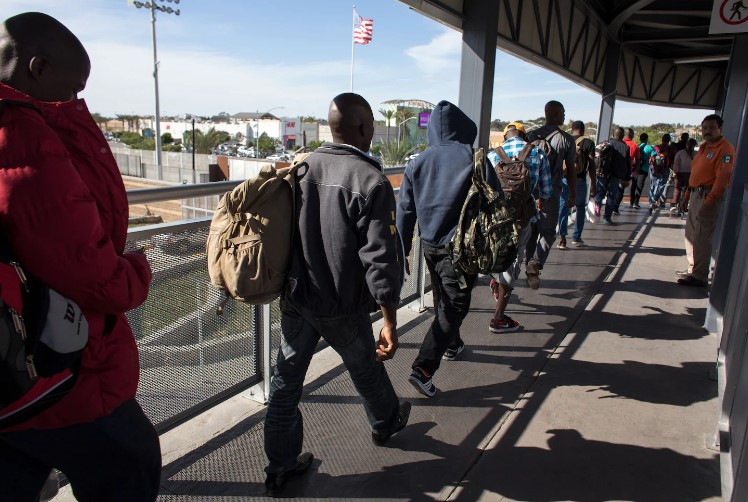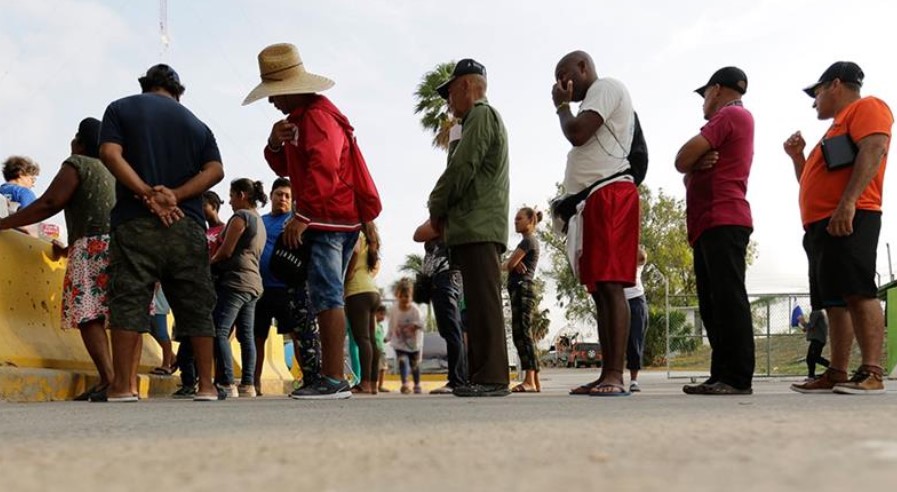The border restrictions that were put in place during the pandemic and have prevented hundreds of thousands of migrants from crossing the United States-Mexico border are scheduled to be lifted on December 21 after a judge in the United States ruled that they were unlawful; however, an ongoing legal battle could delay that timeline.
It is the latest escalation in the immigration debate that is raging in Washington and along the southern border, and it takes place while the Texas National Guard continues their show of force on the border between the United States and Mexico. Omar Villafranca has more
Why Are Migrants Blocked At The Border Under COVID Rules?
In March 2020, when the COVID-19 epidemic began, the health authorities in the United States issued an order known as Title 42. This order gives border patrol agents the authority to quickly send migrants who cross the border between the United States and Mexico back to Mexico or other countries.
This directive was issued under the administration of former Republican President Donald Trump, whose government attempted to significantly reduce immigration levels, both legally and illegally. At the time, the Centers for Disease Control and Prevention (CDC) in the United States stated that it was essential to prevent the further spread of COVID-19.

However, some public health specialists, Democrats, and advocates opposed the order, stating that it unjustly prohibited migrants from claiming asylum and subjected them to hazards, such as kidnapping and assault, in Mexico. These critics pointed out that the order was signed by President Trump.
Also Read:
- 4 Dead And Dozens Injured In Bus Crash In Canada On Christmas Eve
- 3 Dead In Louisiana As US Storm Spawns Southern Tornadoes
How Did Biden Handle Title 42?
Joe Biden, a Democrat who was elected president of the United States and assumed office in January 2021, ran his campaign on a pledge to undo President Trump’s more severe asylum laws.
While Biden worked to stop some of Trump’s limits on immigration, he maintained Title 42 for more than a year, which exempted minors who were travelling without an adult but allowed U.S. officials to deport hundreds of thousands of migrants, including families, back to Mexico.
Since Vice President Biden assumed office, there has been a record number of migrants detained trying to cross the border between the United States and Mexico.
This has presented his administration with both logistical and political obstacles. Following their expulsion under Title 42, several have regularly crossed into Mexican territory through the adjacent border cities.

Mexico is willing to take back people of Mexican, Guatemalan, Salvadoran, Honduran, and Venezuelan nationality who have been deported under Title 42, however people of other nationalities are typically allowed into the United States to prosecute their immigration claims.
A big group of approximately 1,500 migrants waited in line this week to be processed at the border near El Paso, Texas.
El Paso’s deputy city manager, Mario D’Agostino, told reporters on Tuesday that the arrivals were “unsustainable,” and that the city had asked the Biden administration to consider processing migrants at military bases or increasing flights to move migrants to other parts of the border.
D’Agostino said that El Paso had asked the Biden administration to consider processing migrants at military bases or increasing flights.
A representative for the United States Government of Homeland Security (DHS) stated that the department is “working according to plan” in order to quickly decompress the El Paso area.
Why Is Title 42 Ending On DEC. 21?
The CDC said in April that it would be ending Title 42 because, thanks to vaccines and other medical advancements, it was no longer necessary to restrict the spread of COVID-19.
A group of twenty U.S. states led by Republican attorneys general filed a lawsuit to stop the termination, arguing that increasing migration would impose financial burdens on their states. A federal court in Louisiana ultimately sided with the states and prevented the termination.
On November 15th, a judge in Washington, D.C., overturned Title 42 in a separate lawsuit brought by the American Civil Liberties Union and other groups on behalf of migrant families who claim they were affected by Title 42.

U.S. District Judge Emmet Sullivan concluded Title 42 violated federal regulatory law, but he postponed the decision’s effective date until December 21 to give authorities time to prepare.
The verdict prompted a group of Republican-led state attorneys general to lead an effort to have the lawsuit intervened in order to preserve Title 42.
The states made identical arguments to those made by Louisiana, claiming that terminating Title 42 would “create an immense calamity at the border” and force them to pay for services for new immigrants out of their own pockets.
The states might take their case to the conservative-leaning U.S. Supreme Court if the D.C. Circuit rejects their request.
What Comes Next
Although the Biden administration filed an appeal against Sullivan’s judgement last week, in order to maintain the right to enact such public health actions in the future, the administration did not seek to delay the termination of the contract.
According to reports from Reuters and other outlets from earlier this month, the administration is reportedly preparing for a possible increase in the number of border crossings in the event that Title 42 is ended and has privately considered implementing restrictions on asylum similar to those proposed by President Trump as a way to deter migrants.
Some of the concepts that have been brought up for debate include a regulation that would prevent unaccompanied adults from requesting asylum at the southwest border and quicker screenings for asylum applicants while they are in the custody of the United States Border Patrol.
If Title 42 is repealed, the government of Vice President Joe Biden has stated that it will boost the use of accelerated removal, which is a method that allows for faster deportation.
If the effort by the states of the United States to maintain Title 42 in its current form is successful, the status quo will be preserved, and the plans may not be necessary.
Final Words
An ongoing court dispute might prolong the Dec. 21 deadline for the conclusion of the pandemic-era border restrictions that have blocked hundreds of thousands of migrants at the U.S.-Mexico border.

